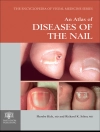The definitive guide to putting spinal cord injury research into practice
Essentials of Spinal Cord Injury is written for the spinal cord injury (SCI) team and reflects the multidisciplinary nature of treating patients with SCI. It integrates emerging medical and surgical approaches to SCI with neuroanatomy, neurophysiology, neuroimaging, neuroplasticity, and cellular transplantation. This comprehensive yet concise reference will enable neurosurgeons, orthopedic surgeons, neurologists, and allied health professionals caring for SCI patients to translate research results into patient care. It is also an excellent resource for those preparing for the board exam in SCI medicine.
Key Features:
- Material is cross-referenced to highlight relationships between the different areas of SCI
- Chapters are concise, focused, and include key points, pearls, and pitfalls
- An Overview of the Literature table is provided in most chapters, giving readers a meaningful distillation of each publication referenced
- Each editor is a world-renowned expert in one of these core disciplines involved in the management of SCI patients: neurosurgery, orthopedic surgery, spinal cord science, and rehabilitative medicine
This is a must-have guide that all neurosurgeons, orthopedic surgeons, neurologists, and allied health professionals involved in the care of spinal cord injury patients should have on their bookshelf.
Tabla de materias
I Principles of Spinal Cord Injury Clinical Practice
1 Anatomy and Physiology of the Spinal Cord
2 Evaluation of the Patient with Spinal Cord Injury
3 Imaging of Acute Spinal Cord Trauma and Spinal Cord Injury
4 Pathophysiology of Spinal Cord Injury
5 Epidemiology of Traumatic Spinal Cord Injury
6 Spinal Cord Injury Classification
7 Spontaneous Recovery Patterns and Prognoses after Spinal Cord Injury
8 Management of Spinal Cord Injury in the Intensive Care Unit
9 Concomitant Traumatic Brain Injury and Spinal Cord Injury
10 Pharmacotherapy in Acute Spinal Cord Injury: Focus on Steroids
11 Halo Application and Closed Skeletal Reduction of Cervical Dislocations
12 Principles of Surgical Management of Spinal Trauma Associated with Spinal Cord Injury
13 Venous Thromboembolism Prophylaxis
14 Sexuality and Fertility after Spinal Cord Injury
15 Interdisciplinary Essentails in Pressure Ulcer Management
16 Autonomic Dysreflexia and Cardiovascular Complications of Spinal Cord Injury
17 Pain after Spinal Cord Injury
18 Essentials of Spinal Cord Injury: Psychosocial Aspects of Spinal Cord Injury
19 Posttraumatic Kyphotic Deformity of the Cervical Spine
20 Posttraumatic Syringomyelia: Pathophysiology and Management
21 Rehabilitation of the Individual with Spinal Cord Injury
22 The Management of Secondary Complications Following Spinal Cord Injury
II Controversies in Management
23 Timing of Surgery for Acute Spinal Cord Injury: From Basic Science to Clinical Application
24 Hypothermia: Evidence-Based Review
25 Management of Cervical Facet Dislocation
26 Management of Acute Spinal Cord Injury in Thoracolumbar Burst Fractures Including Cauda Equina Syndrome
27 Management of Central Cord Syndrome
III Neuroprotective and Neuroregenerative Approaches
28 Research in Spinal Cord Injury: Building an Effective Translational Research Program
29 North American Clinical Trials Network: Building a Clinical Trials Network for Spinal Cord Injury
30 Considerations for the Initiation and Conduct of Spinal Cord Injury Clinical Trials
31 Animal Models of Spinal Cord Injury
32 Glial Scar and Monocyte-Derived Macrophages Are Needed for Spinal Cord Repair: Timing, Location, and Level as Critical Factors
33 Promising Preclinical Pharmacological Approaches to Spinal Cord Injury
34 Cellular Transplantation in Spinal Cord Injury
35 Neuroregeneration Approaches
36 Neuroprotective Trials in Spinal Cord Injury
37 Approaches Using Biomaterials for Tissue Engineering
IV Neurophysiology and Imaging
38 Electrophysiological Measures after Spinal Cord Injury
39 Quantitative Tests of Sensory, Motor, and Autonomic Function
40 Basic Neurophysiological Approaches to Probing Spinal Circuits
41 Neuroimaging after Spinal Cord Injury: Evaluation Injury Severity and Prognosis Using Magnetic Resonance Imaging
42 The Role of Neurophysiology in Study of Recovery and Spasticity
V Plasticity and Recovery
43 Spinal and Supraspinal Plasticity after Spinal Cord Injury
44 The Human Central Pattern Generator and Its Role in Spinal Cord Injury Recovery
45 Electrophysiological Predictors of Lower Limb Motor Recovery: The Rehabiliation Perspective
46 Somatosensory Function and Recovery after Spinal Cord Injury: Advanced Assessment of Segmental Sensory Function
47 Electrical Stimulation Following Spinal Cord Injury
48 Operant Conditioning of Spinal Reflexes to Improve Motor Function after Spinal Cord Injury
49 Functional Restoration through Robotics
50 Peripheral Nerve Grafts and the Repair of Axonal Circuits Following Spinal Cord Injury
IV Resources
51 Population-Based Spinal Cord Injury Registries: Potential Impacts and Challenges
52 Resources to Empower and Expand the Opportunities of People with Spinal Cord Injury
VII Achieving Success
53 Neurogenomic and Neuroproteomic Approaches to Studying Neural Injury
54 Breakthroughs of the Last Twenty Years












